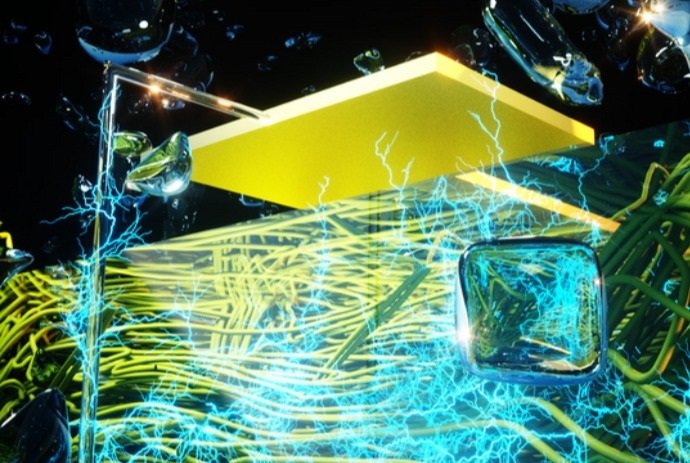
At the University of Massachusetts Amherst, a group of engineers has made an exciting discovery that could allow us to generate electricity from the moisture in the air around us.
The process involves making tiny holes, called nanopores, less than 100 nanometers wide in different materials.
This is so small, it’s about a thousand times smaller than a human hair!
This work was published in the scientific journal Advanced Materials.
Xiaomeng Liu, a graduate student, and one of the main authors of the study, says that this discovery could open up new possibilities for creating clean electricity, literally out of thin air.
Assistant Professor Jun Yao, the other main author, explains that the air is full of electricity. Think about a cloud, which is a huge mass of water droplets.
Each droplet carries an electric charge, which sometimes can produce a lightning bolt when conditions are right. However, we haven’t been able to harness this electricity, until now. The team has created a smaller, human-made version of a cloud that continuously produces electricity in a controlled and predictable way.
The key to this process is something the scientists call the “generic Air-gen effect.” This builds on earlier work in 2020, where the team showed that a specific type of bacteria, Geobacter sulfurreducens, could generate electricity from the air.
But they’ve now found that almost any material could do this, as long as it has one important property: tiny holes less than 100 nanometers wide.
Why so small? Well, this relates to how far a water molecule travels in the air before it hits another molecule – about 100 nanometers. The team used this knowledge to design an “electricity harvester.”
It’s a thin layer of material full of nanopores that allow water molecules to move from one side to the other.
But because the pores are so tiny, the water molecules frequently hit the sides, creating an imbalance of charges. This imbalance acts like a battery that keeps running as long as there’s moisture in the air.
Yao describes the idea as simple but ground-breaking, opening up many new possibilities. These harvesters could be made from different materials to suit different environments – from humid rainforests to arid deserts. Plus, they would work all the time, day and night, whatever the weather. This solves a big issue with other renewable energy sources like wind or solar power, which rely on specific conditions to work.
Another advantage of this technology is that it can be stacked up to generate more power without taking up more space. Imagine many layers of this electricity-harvesting material, each only a fraction of the width of a human hair, working together to create enough power for everyday electrical use.
Yao envisions a future where clean electricity is accessible anywhere. Thanks to this discovery, it’s not just a dream but a possibility that could become reality.



